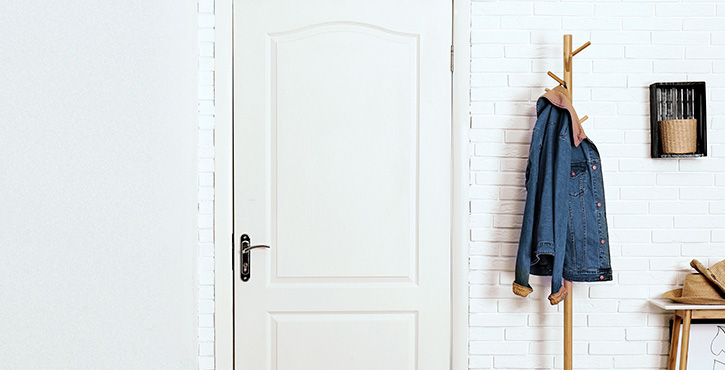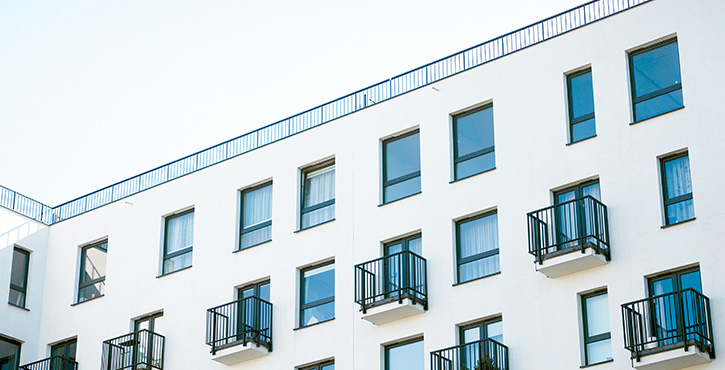What is mould?
Mould is a type of tiny fungus that’s invisible to the naked eye. In nature, these fungi are essential for biodegradation, but they can result in serious problems when they grow inside buildings.
Mould usually comes with a distinctive odour of moisture, dampness or even soil. These microscopic fungi release spores which cause this smell. Inhaling too many of these spores is exactly what can harm your health.
What causes mould?
Mould usually grows on dusty surfaces in our homes or on porous materials on which they feed such as wood, cardboard, fabrics, gypsum boards and so on. However, mould needs moisture to thrive.
Traces of mould means water is present, even in very small quantities. Therefore, your first reaction when you find mould in your home should be to look for water infiltration near the affected surface. If that’s the case, fix the problem right away. A dehumidifier may be useful if the humidity level in your home exceeds 45%.
The most common types of mould in homes:
Aspergillus
One of the most common fungi, Aspergillus is often found in dusty corners of buildings.
Cladosporium
This fungus tends to grow on fabrics or wooden surfaces. It may cause symptoms like hay fever and/or increase the prevalence of asthma.
Penicillium
This species was first discovered for its role in the creation of penicillin antibiotics. It’s also used to make certain cheeses. In our homes, however, its presence can cause allergy symptoms.
Stachybotrys
Black spots caused by Stachybotrys fungi are the most dangerous of common house moulds. Its ambient air toxins can cause major breathing problems and even cause bleeding into the lungs in more severe cases.
Health and toxicity
Only a microbial assessment can confirm a mould’s toxicity level. Keep in mind that in small quantities, most mould species are not dangerous. However, any visible trace of mould or odours of excessive moisture should be treated to prevent the situation from getting worse.
The presence of mould indoors can lead to the following symptoms:
- Eye, nose or throat irritation
- A runny nose that persists or does not disappear as with colds
- Sinus congestion
- Wheezing
- Coughing
- Increased frequency and severity of asthma attacks
- Chronic fatigue
- Headaches
The population most at risk of developing symptoms of mycotoxin poisoning are young children, the elderly and those living with respiratory diseases. That’s why it’s so important to be especially careful with these vulnerable groups.
How to remove mould?
Here are some homemade, low-cost and eco-friendly ways to remove mould stains:
All-purpose and multi-surface cleaner:
For most surfaces (walls, woodwork, etc.), mixing equal parts water and white vinegar is generally effective. Simply spray the surface with a spray bottle and let it work for several hours before wiping with a dry cloth (do not use a brush).
More than one attempt may be necessary to eliminate all fungi. A few drops of lemon juice or essential lavender oil can be added to the mixture to give it a more pleasant aroma.
Bathroom tiles:
To remove the mould that often grows on the tile joints in the bath or shower, simply mix a glass of white vinegar with two tablespoons of baking soda. Brush the surface with the mixture, leave on for at least 10 minutes, then rinse.
You can repeat this process several times a year.
Fabrics:
If curtains, blankets or cushions have been slightly affected by mould and you wish to keep them, you can make your own cleaner by mixing toothpaste and a pack of instant dry yeast purchased at the grocery store. Rub the stains with a soft-bristled toothbrush before putting the fabrics in the washing machine.
Although bleach was once recommended for the treatment of mould, it no longer is because it can be harmful to your health and the environment.
Finally, if the affected areas are large (more than 1 m2), widespread, difficult to remove or if the mould comes back after a good cleaning, Health Canada recommends calling upon experts. They can assess the extent of your problem more effectively and undertake the work that needs to be done to solve the issue.
Regardless of the situation, you should always react promptly when you find mould. Early intervention can save you many worries and protect the health of the building and its occupants.




